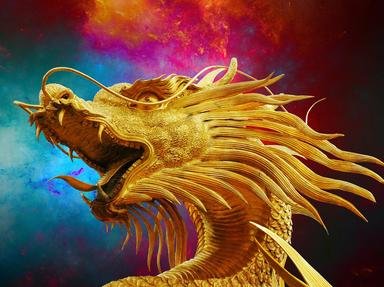Quiz Answer Key and Fun Facts
1. As featured in a popular Disney movie, this creature is half human and half fish. The first legend of this creature may lie within Syrian mythology: the goddess Atargatis wished to dive into a lake as a fish, but was only allowed to give up half her body to preserve her attractiveness. Which alluring creature is this?
2. 'Between a rock and a hard place' sums up the dilemma Odysseus of Homer's Odyssey had to face when having to choose whether to sail his crew by either a six-headed sea monster or a whirlpool, knowing it was difficult to escape harm in either case. What were the names given to the murderous monster and warped whirlpool originating from Greek mythology?
3. Terrorising the seas near Norway and Iceland, certain giant squid-like creatures from Norse mythology enjoy snacking on humans, ships and other sea creatures. Homage has been paid to them through display in one of Alfred Tennyson's sonnets and in 'Pirates of the Caribbean: Dead Man's Chest' (2006), but can you remember the terrible creature's name?
4. As featured in video games such as 'Secret of Mana' and 'Tales of Phantasia', and in the title of a book written by Penni Russon, which water nymph depicted in European folklore could only gain a soul through marrying and bearing the child of a human man?
5. A certain Japanese creature, whose name translates as 'River-child', is a green-blue humanoid which loves to cause mischief to humans and their pets. However, they are highly polite, and if tricked into helping humans, will follow through on their promises. What is the name of this mischievous imp?
6. Jormungand of Norse mythology was said to encircle Midgard, the realm of humans, and was so long it could bite and latch onto its own tail. The severing of this link would signal that the end of the world was nigh. What type of creature was the fateful Jormungand?
7. The namesake of one of Neptune's moons, there were fifty beautiful sea nymphs born from the same parents in Greek mythology. When not kindly assisting sailors in their perilous sea journeys, they would reside in a deep sea cave of the Aegean Sea with their father. What was their collective identity?
8. A goddess of pure chaotic energy and salt water, Tiamat gave birth to many deities with Apsu, the embodiment of fresh water. Apsu tired of these unruly deities and wanted them dead, but they found out and killed him first. In a rage, Tiamat flew into war with her descendants; however, she lost, and her body formed the world as we know it. From what mythology does this tale come?
9. Daughters of the Greek river god Achelous, these sultry seductresses would lure sailors to their doom through their sweet yet sorrowful songs. Their melody would cause the body to rot and atrophy would spread, and when their song would end, those listening would die. What was the name of these melodious murderers?
10. Featuring in the Bible, Middle Eastern and Jewish mythology, and in a movie named after the creature in 1989, a certain creature was said to rule over all other sea creatures. It had giant scales and would cause the sea to boil when it came to the surface, and, in the Bible, no human weapon could harm it. What was the identity given to this grand king of the sea?
Source: Author
malik24
This quiz was reviewed by FunTrivia editor
looney_tunes before going online.
Any errors found in FunTrivia content are routinely corrected through our feedback system.

